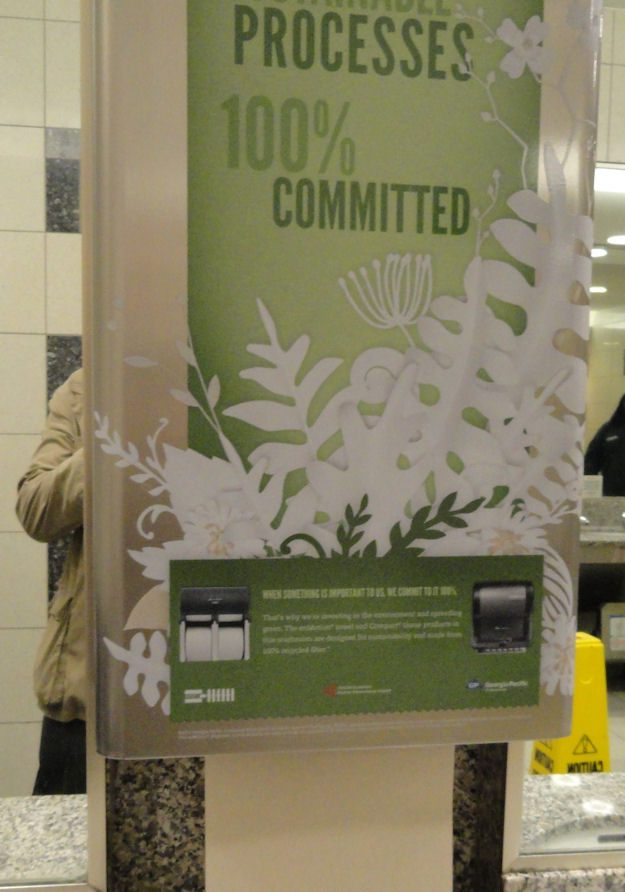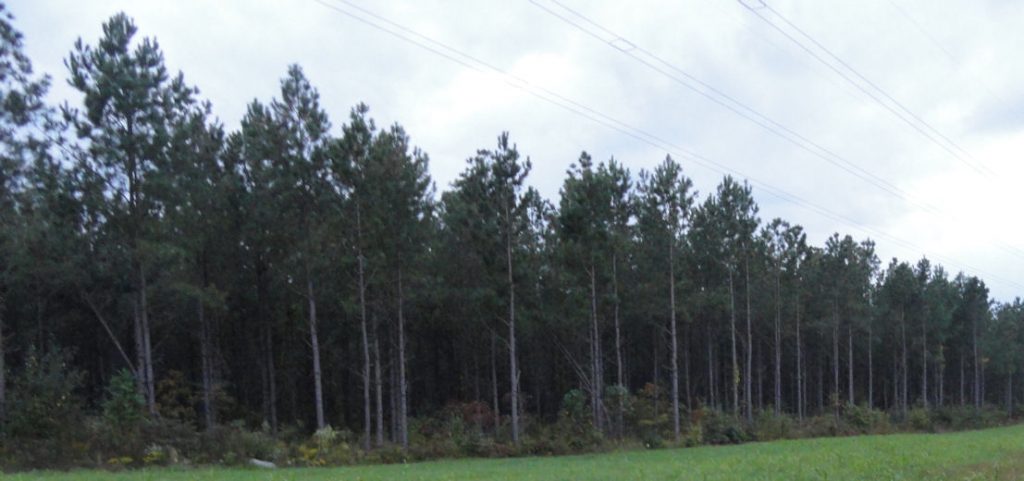
Saving paper doesn’t save trees. This is what I have on the bottom of my emails, “If you feel it necessary to print this message, recall that wood is 100% renewable resource & we grow most of the pulp wood for paper sustainably on American tree farms.” Some people like it; some are offended; most probably don’t notice. I put it on there against those silly ones that tell you to be careful not to print in order to save trees.
Saving paper does not save trees because most paper is made from pulp trees grown sustainably on tree farms.
The trees cut for pulp are usually cut as part of thinning operations. They CANNOT be saved. If you do not thin your forests, growth slows; health declines and beetles start to attack all the trees. You could thin the trees and then just leave them on the ground, but that leads to fire danger and insect infestations. Thinning trees is good for the health of the forest. It is also good for wildlife, since the thinning allows sunlight into the woods, encouraging the diverse food supplies wildlife needs. Forest landowners don’t make much money from thinning operations. Most of the money they make goes into forest improvement, BUT if there is no profitable market (i.e. paper) for thinned wood most forest landowners cannot afford to do it at all.
The bottom line is that the paper industry contributes to healthy forests. Forests would be LESS robust w/o paper industry demand for pulpwood. People should put what I have on the bottom of their emails. If they want to measure environmental costs, they need to measure energy. Below are some of my sixteen year old loblolly. They were thinned two year ago. We removed about half the trees. You can see that they have easily grown together.

The environmental impact of paper on forest health is a net benefit. The place where paper could be a negative is energy cost. It takes energy to cut trees, process paper and move it to your office. This means that NOT using paper may be a good thing in some cases, if energy costs outweigh effects on forest health.
What rarely makes sense is recycling small amounts of paper. Make the distinction. Recycling bulk paper makes sense. Recycling small batches does not. Think of the energy costs. You have to collect paper using trucks and then put it through a similar process as making paper from wood. The equation involves the energy needed to harvest timber versus the energy required to “harvest” recycling. Collecting small amounts of paper, especially paper that is soiled, makes no sense. Recycling that Starbucks cup almost certainly is worse for the environment than would be making paper with newly harvested trees. The paper plants are probably closer to the forest than they are to the places where you are tossing those cups. It will cost a lot to clean these things and paper is heavy. It takes a lot of energy to move. The big problem if you don’t recycle paper is the space it takes in landfills. This is also not a clear choice. Wood sequesters carbon until it is burned or decays. If the paper made from wood sits in landfills, it holds onto that carbon for a long time. Somebody should do the math on this.
So the common denominator of all this is energy. Does it take more energy to recycle or make new paper? Add in the variable that the demand for paper is beneficial to forest health. Paper making may use trees but it saves forests by increasing forest health. Speaking of energy, the widespread replacement of paper with electronic files is not ecologically free.
Data is stored and processed at large computer service farms. Computers in server farms run 24/7, and consume prodigious amounts of electricity, both for the computers and the air conditioning needed to keep them cool. But this is another story.
The bottom line is that saving paper does not save trees and may actually have negative impacts on forest health. It MAY save energy and certainly saves money for you or your firm. We need to balance the needs to have printed materials with ecological and cost concerns. Just do the right thing for the right reasons. This brings me to what made me think about this. In the Atlanta airport I saw the machine pictured above. This is plain stupid. It purports to be environmentally benign but it making at least three big mistakes. It saves paper, which is not needed. To do that it USES energy. Beyond that, it puts in each bathroom a piece of complicated electronics that inevitably requires maintenance. Whoever bought this made a mistake from the environmental point of view, although probably not from the PR perspective. Many people see something like this and feel much better about wiping their hands. Many of these people will probably put some “save the trees” message on their emails.
